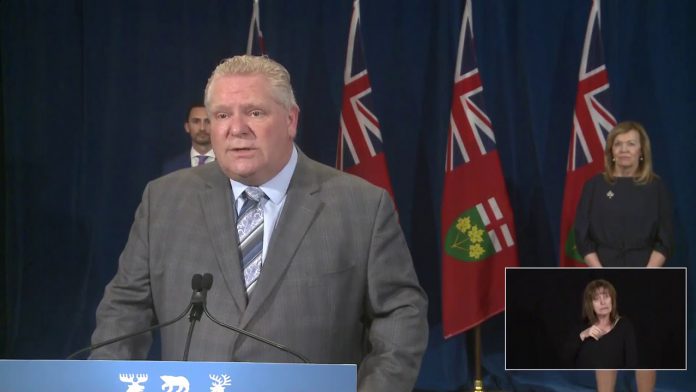New Approach Will Lead to More Modern and Upgraded Facilities with Air Conditioning
TORONTO — The Ontario government announced a redesigned funding model that will lead to the building of additional, modern long-term care homes providing seniors with the quality care they deserve.
As the deaths mounted during the COVID-19 pandemic at Ontario’s long-term care homes, the Premier has repeatedly said his government will make those homes safer and better. A report from the Canadian Army released several weeks back outlined the problems, and moved both the government and the opposition parties into high gear toward solving this health crisis.
This new approach will help break down historic barriers and accelerate the construction of urgently needed long-term care projects, and new and redeveloped beds. Over the next five years, the government is investing $1.75 billion in long-term care homes. It is also updating design standards to include air conditioning for any new and renovated homes, beginning immediately. Details were provided today by Premier Doug Ford, Christine Elliott, Deputy Premier and Minister of Health, and Merrilee Fullerton, Minister of Long-Term Care.
“After inheriting 15 years of underinvestment in long-term care and a massive waitlist of seniors, our government is putting forward bold new solutions to turbocharge the development of long-term care beds across the province and ensure our most vulnerable citizens can live in modern surroundings,” said Premier Ford. “That’s why our new funding model will not only encourage new beds to be built faster, but also upgrade existing older homes to meet high-quality design standards, with features like air conditioning and private or semi-private rooms. Our seniors deserve nothing less.”
The new funding model will help speed up construction by:
- Creating four new regional categories based on geographic location, each with a targeted home size: large urban, urban, mid-size, and rural. An increase to the province’s construction funding subsidy (CFS) will be tailored to each of these four categories, enabling the government to address the barriers and needs of different communities;
- Providing development grants, between 10 percent and 17 percent depending on the regional category, to cover upfront costs like development charges, land, and other construction expenses;
- Helping small operators in rural communities navigate the high cost of development, while ensuring larger urban centers can secure the loans and real estate they need; and
- Increasing funding to incentivize the construction of basic accommodation and continuing top-ups for small and medium-sized homes.
By taking these steps the government is making it more attractive for operators to build long-term care homes and bring aging homes with 3-4-person ward rooms up to modern design standards. Currently, more than 38,000 people are on the waitlist to access a long-term care space, and new long-term care home construction has not kept pace. The previous “one-size-fits-all” funding model has not spurred development nor accounted for how regional differences impact land, construction, and other development costs.
Working with the long-term care sector, the government will dedicate funding to ensure long-term care homes in need have working air conditioning ― a measure that should have been put in place many years ago.
With thousands of new and redeveloped beds on the way, the government is also going to be changing long-term care regulations and design standards to ensure that all new long-term care builds and redevelopments are mandated to have air conditioning.
“This newly designed model is a signature element of our government’s plan to address capacity in long-term care,” said Minister Fullerton. “This bold new plan will allow us to modernize a system that had been neglected for years, reduce the waiting list and ensure seniors live in a setting that is modern, clean and comfortable. In addition, this new investment will create jobs and contribute to our economic recovery.”
QUICK FACTS
|







